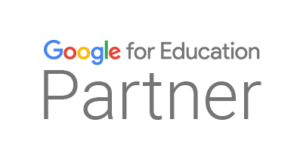Schools today are more connected than ever before. From digital classrooms to online portals for parents and students, technology has become the backbone of modern education. This digital transformation has created opportunities for learning, but it has also introduced new risks. Cybercriminals are advancing their methods, and schools need to be ready. In 2025, these trends will stand out as critical for school cybersecurity. Understanding these cybersecurity trends and preparing for them can help schools create safer digital spaces for students, teachers, and administrators.
AI Powered Cyber Attacks
Artificial intelligence is no longer just a tool for positive innovation. Hackers are now using AI to launch smarter and faster attacks. Unlike traditional methods, AI powered attacks can adapt in real time, bypass defenses, and even mimic human behavior to trick users. This makes them harder to detect and more damaging. For schools, this cybersecurity trend is significant. Imagine a phishing email that looks so authentic it fools even the most careful staff member. Also, a malware program that changes its code to avoid detection by standard antivirus software. These are no longer theoretical scenarios. They are becoming a reality.
The best way schools can prepare is by adopting advanced security solutions that also use AI to fight back. Just as attackers use AI to get in, defenders can use it to keep them out. This includes real time monitoring, automated threat detection, and systems that learn from past attacks to prevent future ones. Regular staff awareness sessions are equally important. Teachers and administrators must be trained to identify suspicious behavior before it becomes a bigger problem.
By staying ahead of AI driven threats, schools can safeguard sensitive student and staff information and maintain trust in their digital systems.
IoT Vulnerabilities in Schools
Smartboards, security cameras, Wi-Fi connected projectors, biometric attendance systems, and even smart lighting are now common in schools. All of these belong to the Internet of Things, often called IoT. While IoT devices make school operations more efficient, they also open up more doors for hackers. Every connected device can be a potential entry point.
The problem is that many IoT devices are designed with convenience in mind rather than strong security. Default passwords, outdated firmware, and lack of encryption make them easy targets. Once a hacker gets into one device, they can move across the network to access sensitive data. This includes exam records, personal information, and financial details.
Schools must prioritize IoT security as part of their overall cybersecurity plan. This means ensuring devices are updated regularly, default settings are changed, and access is restricted to only those who need it. Network segmentation can also help. By keeping IoT devices on separate networks from administrative or academic systems, schools reduce the risk of one weak link compromising the entire infrastructure.
The benefits go beyond security. A properly secured IoT environment ensures that learning remains uninterrupted, systems run smoothly, and parents can continue to trust how schools handle their children’s data.
Proactive Security Measures
The third trend is not about a new technology but about a mindset shift. Reactive security, where schools only respond after an attack, is no longer enough. Proactive security measures are now essential. This involves predicting risks, preparing defenses, and preventing attacks before they cause damage.
Proactive measures can include regular system audits to identify vulnerabilities before hackers do. Schools can also conduct simulated cyber-attack drills to test how prepared their staff and systems are. Training sessions that go beyond the basics can empower teachers, students, and administrators to recognize threats early.
Advanced security technologies such as intrusion detection systems, multi factor authentication, and end to end encryption are also part of this proactive approach. Schools that invest in these tools and practices will find themselves better equipped to handle the evolving threat landscape.
Taking proactive steps creates long term benefits. Not only do schools reduce the risk of data breaches, but they also avoid costly downtime. Most importantly, they ensure continuity of education even when external risks are high.
Why Preparation Cannot Wait
Some may believe that cyber-attacks are a problem mainly for corporations or government agencies. However, schools are increasingly attractive to hackers. They hold large volumes of personal and financial data. Many schools lack strong defenses compared to larger organizations, making them easier targets.
The impact of a cyber-attack on a school can be devastating. It can interrupt classes, lock teachers out of resources, and even put student safety at risk. Parents may lose trust in how the school manages sensitive information. Restoring systems after an attack is not only expensive but also time consuming. The best defense is preparation.
By understanding and addressing the three emerging trends of AI powered attacks, IoT vulnerabilities, and the need for proactive measures, schools can stay ahead of cybercriminals. This preparation will help protect students and staff, keep learning on track, and maintain the reputation of the institution.
The Road Forward
The digital classroom of 2025 offers immense opportunities for growth and innovation. At the same time, it demands stronger protection than ever before. Schools must see cybersecurity as a core responsibility rather than an optional investment. The steps taken today will shape how secure, resilient, and trusted schools will be tomorrow.
Every school leader should ask a simple question. Are we prepared for the future of cybersecurity. If the answer is no, the time to act is now.



 1st Floor, H-31, Sector 63,
1st Floor, H-31, Sector 63,